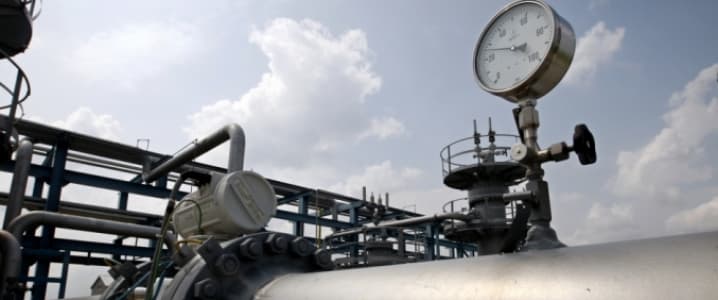How do you ride out low oil prices and still pay dividends and CEO salaries? You double down on debt, apparently.
All oil majors posted plunging profits or accumulated losses in the second quarter, blaming low crude prices and weak refining margins for these results that missed estimates—in some cases by wide margins. All saw cash flows shrinking, and yet, all kept dividends intact and vowed to continue investing in their respective major projects.
Quite naturally, all these factors have led to supermajors amassing more and more debt since crude oil prices started slumping in 2014.
Estimates by Bloomberg have shown that oil majors have doubled their combined debts to US$138 billion since 2014. That’s also a staggering tenfold jump from the 2008 total oil major debts.
Looking at the Q2 balance sheets of some oil majors, we see debts rising, cash flows dropping, capex diminishing, but dividends firmly held, and in Exxon’s (NYSE:XOM) case, even raised by 2.7 percent compared with the second quarter of 2015—the same quarter in which Exxon’s earnings plunged 59 percent annually.
Another U.S. oil major, Chevron (NYSE:CVX)—which swung to a US$1.47-billion net loss in the second quarter—reported a total debt of US$ 45.085 billion as of June 30, 2016, up from US$38.549 billion at the end of December 2015, while cash and cash equivalents dropped to US$8.764 billion from US$11.022 billion. Cash flow from operations shrank to US$3.7 from US$9.5 billion. Capex declined to US$12 billion from US$17.3 billion. But interim dividends were diligently kept unchanged, lest shareholders be disappointed by their returns.
Dividends were also held steady at BP (NYSE:BP), whose second-quarter profit plunged to US$720 million from US$1.3 billion for the second quarter of 2015. In the group’s own words, “refining margins were the weakest for a second quarter since 2010.” Related: Surprise Natural Gas Drawdown Signals Higher Prices Ahead
BP’s US$1.9-billion proceeds from divestments in the first half of 2016, and organic capex reduced to US$7.9 billion from US$8.9 billion, were not sufficient to offset the lower operating cash flows amid the challenging environment. And BP saw its net debt rise to US$30.9 billion at end-June from US$24.8 billion a year earlier. Net debt ratio jumped to 24.7 percent from 18.8 percent.
It would appear that BP’s CEO Bob Dudley, is not terribly concerned about borrowing money to keep on paying dividends. “Money is so cheap right now,” Dudley told Bloomberg in an interview after the group announced its second-quarter figures. “I’m not at all uncomfortable in the 20 percent to 30 percent range,” the manager added, commenting on BP’s much higher gearing.
Indeed, money is cheap these days, with interest rates and borrowing costs at historic lows, as central banks are trying to spur economic growth and investments. The question is, will it be cheap for BP to continue amassing debt when the time comes to pay down those debts.
BP has also spent millions of dollars on top executive pays in recent years, when such a splurge seemed inappropriate amid record losses and en masse lay-offs. Finally, earlier this year, shareholders rebelled against Dudley’s pay and voted down a proposed 20-percent hike in the CEO’s remuneration.
Debt is also an issue with another European supermajor, Royal Dutch Shell (NYSE:RDS.A), which disappointed analysts with second-quarter profits missing estimates by US$1 billion. Shell’s debt surged to US$75.1 billion at end-June from US$26.624 billion at end-2015, primarily due to the borrowing it had to take on to support its US$54-billion acquisition of BG. Analysts predict that Shell’s debt will rise more in the coming quarters, before starting to shrink with potential synergies and cost savings. Related: Activist Investors About To Shake Up The Oil Patch
Actually, all oil majors are likely to increase debts in the next few quarters, with crude prices still barely hovering around the US$40 mark, after dipping to US$39 early last week. Asset sales and investment shifts to higher-margin projects will not be able to compensate for lost revenues in both upstream and downstream, at least not until the end of 2016. What’s more, we are now headed towards seasonally weaker demand after the summer peak demand for oil has ended, and before winter demand settles in.
In addition, global demand growth may have abated somewhat, but oversupply is still strong. In late July, the World Bank raised its 2016 crude price forecast to US$43 from US$41 per barrel, but warned that inventories were still high and would take time to draw down.
ADVERTISEMENT
Although crude prices now are a far cry from the US$26 twelve-year-low from February, but most majors have factored in oil stable at US$50 for sustainable business.
At any rate, in the current price environment, oil majors cannot afford to stretch their budgets for much longer—despite hefty cost cuts—simply because they are not generating more than they are spending. And they will continue to streamline costs and may resort to more capex reductions. That’s at least more likely than cutting the precious dividends.
By Tsvetana Paraskova for Oilprice.com
More Top Reads From Oilprice.com:
- Why The UK Postponed This Nuclear Megaproject
- Six Weeks In A Row – Rising Rig Count Pushes Oil Down
- The Rumors Are Back! Oil Rallies On OPEC Chatter



















All the data I see shows demand is increasing.
Did you do the usual journalistic trick of changing a reduction of demand growth into a reduction of demand ?????